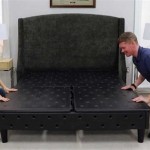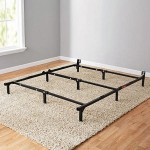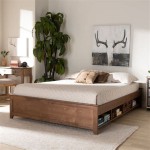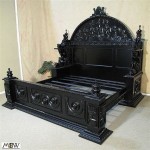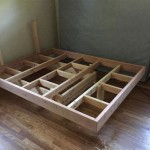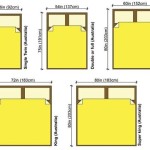How To Arrange a Queen Bed in a Small Room
Arranging a queen-size bed in a small room presents a unique set of challenges. Maximizing space and maintaining a sense of openness require careful planning and strategic furniture placement. This article outlines several approaches to optimize space utilization and create a comfortable and functional bedroom environment.
Corner Placement: Embracing the Angles
Positioning the queen bed in a corner is often the most space-efficient solution. This placement minimizes the bed's footprint within the room and maximizes the remaining floor area. Pushing the headboard against two walls creates a cozy, nestled feel while freeing up space for other furniture.
Against the Wall: A Classic Approach
Placing the headboard against the longest wall is a traditional approach that can work well in small rooms. This layout establishes a clear focal point and creates symmetry. It is particularly effective in rectangular rooms, as it emphasizes the room's length and can make it appear larger.
Under a Window: Light and Space
While not always feasible, placing the bed under a window can create a sense of airiness and maximize natural light. This configuration often necessitates low-profile furniture like nightstands or floating shelves to avoid blocking the window. Consider curtains or blinds that offer privacy without overwhelming the space.
Footboard Facing the Door: A Bold Statement
While less common, positioning the footboard facing the door can create a dramatic visual effect. This layout often requires a larger room, but in a small space, it can work if the bed is positioned centrally and the remaining furniture is minimal and carefully placed. A narrow footboard or even eliminating the footboard entirely can further enhance this arrangement.
Utilizing Vertical Space
In small rooms, vertical space is a valuable asset. Consider incorporating tall bookshelves, wardrobes, or storage units to maximize storage capacity without sacrificing floor space. Wall-mounted shelves and floating nightstands can further enhance vertical storage and create a cleaner, less cluttered aesthetic.
Minimizing Furniture
Reducing the number of furniture pieces in the room can significantly impact the sense of spaciousness. Opt for multi-functional furniture, such as a storage ottoman that can serve as a footrest and storage container. Limit decorative items and keep surfaces clear to avoid a cluttered appearance.
Choosing the Right Bed Frame
The bed frame itself can influence the perception of space. A platform bed with built-in storage drawers can provide substantial storage solutions without increasing the bed’s footprint. Alternatively, a sleek metal frame or a headboard with a minimal design can create a sense of airiness. Avoid bulky or ornate frames that can visually overwhelm a small room.
Light and Color Considerations
Light colors reflect light, creating an illusion of spaciousness. Opt for light-colored walls, bedding, and curtains to make the room appear larger. Maximize natural light by keeping window coverings minimal and incorporating mirrors to reflect light throughout the space. Strategic lighting fixtures, such as wall sconces or a strategically placed floor lamp, can also enhance the perception of space.
Creating Zones within the Room
Even in a small room, creating designated zones can improve functionality and organization. A small rug placed beside the bed can define a sleeping area, while a separate seating area can be created with a small armchair and a floor lamp. These zones can help to visually break up the space and make it feel more organized.
Maintaining Clear Pathways
Ensure clear pathways around the bed and other furniture. Avoid obstructing doorways or creating tight squeezes between furniture pieces. This promotes ease of movement and contributes to a more comfortable and functional room.
Decluttering and Organization
Regular decluttering is essential for maintaining a sense of spaciousness. Remove unnecessary items and organize belongings within designated storage areas. This will prevent the room from feeling overcrowded and contribute to a more peaceful and relaxing environment.
Regular Reassessment
Periodically reassess the room's layout and make adjustments as needed. Lifestyle changes or evolving needs might necessitate a furniture rearrangement or a change in décor. Regularly evaluating the room’s functionality can ensure that the space remains optimized for comfort and practicality.
How To Arrange A Small Bedroom With Queen Bed
Stressed Out Over A Queen Bed In 10 X Bedroom Here S 8 To Help Michael Helwig Interiors
Stressed Out Over A Queen Bed In 10 X Bedroom Here S 8 To Help Michael Helwig Interiors
20 Smart Ideas How To Make Small Bedroom Look Bigger
Stressed Out Over A Queen Bed In 10 X Bedroom Here S 8 To Help Michael Helwig Interiors
How To Arrange A Small Bedroom With Queen Bed
3 Furniture Layouts For A Small Bedroom Bless Er House
30 Tiny Yet Beautiful Bedrooms
Queen Size Bed Dimensions Amp Layout Ideas For A Small Bedroom
How To Arrange A Small Bedroom With Queen Bed Transitional Design Layout
